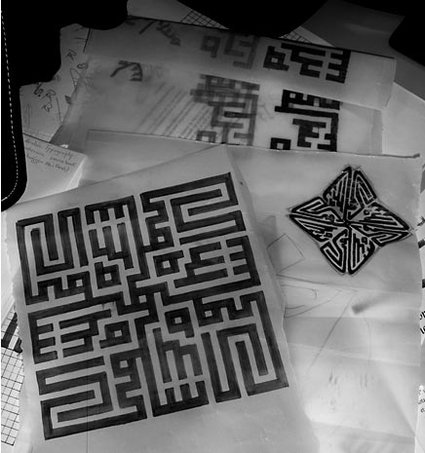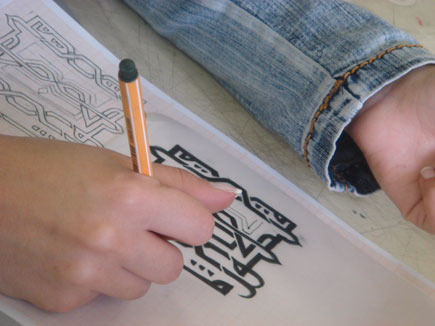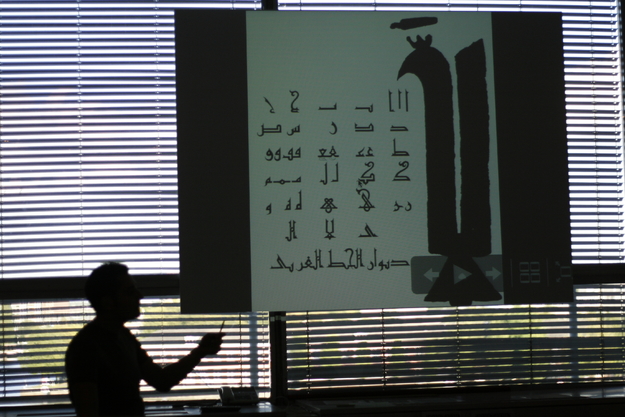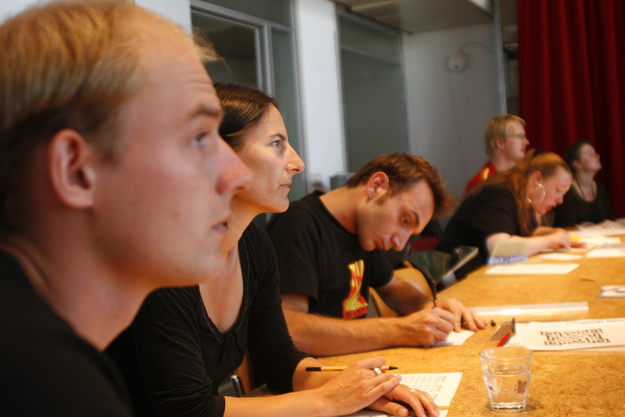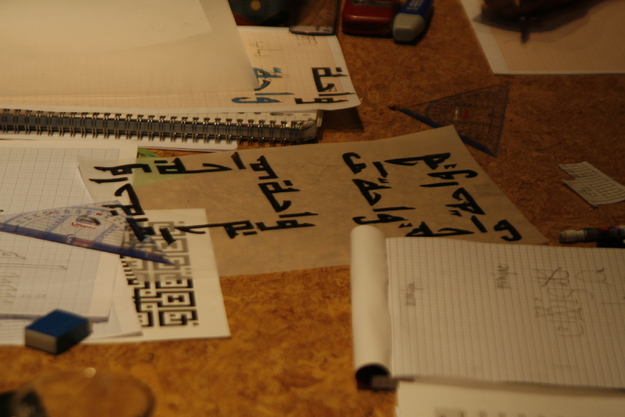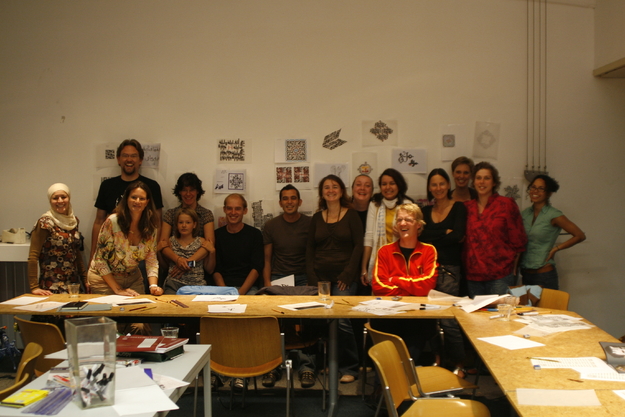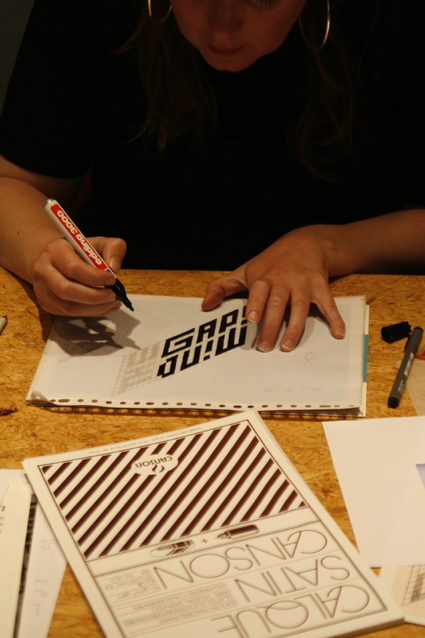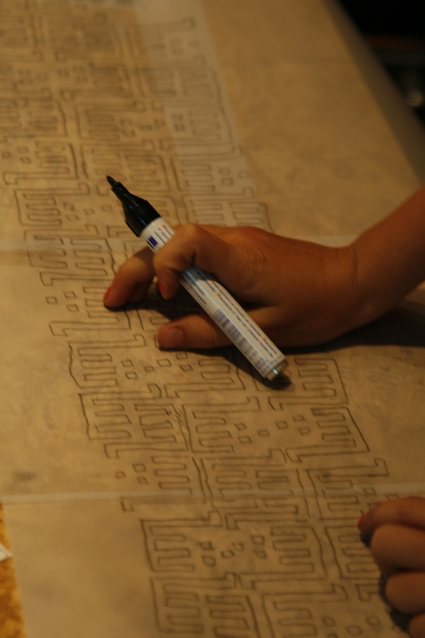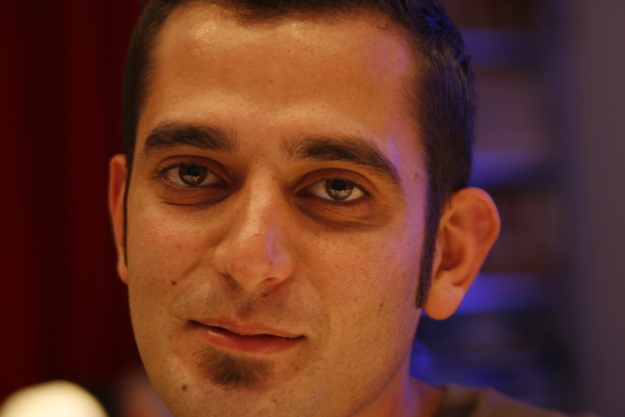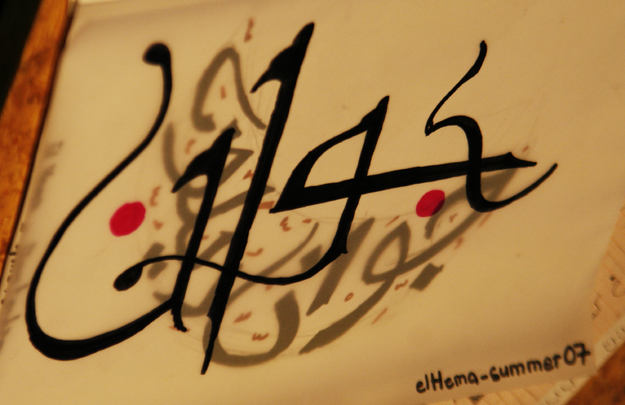Workshop approach
The workshop will grant the participants the comprehension of Arabic Kufi patterns and enable them to create their own Kufi patterns using Arabic and/or Latin words. Participants will benefit from learning the Kufi technique and style and will be capable to decipher geometric Kufi patterns into word or sentences and not only view them as patterns. The workshop will start with a 15 minutes lecture about the Arabic Typology and History of the Kufi Arabic script. Then each participant will choose an Arabic, Dutch or English word to be used in the creation of the Kufi artwork.
Trainer
Pascal Zoghbi is an experienced Arabic typographer from Lebanon. Pascal has worked on numerous Arabic type design projects and is part time instructor at the American University of Beirut [AUB] and Notre Dame University [NDU] in the Faculties of Design where he teaches typography courses. Visit his website 29letters for more info.
Participants
The workshop is intended for people who are interested in the Arabic script and willing to know more about Arabic Kufi style and to tackle a hands-on geometric Kufi pattern. Participants from all nationalities (and not only Arabic participants) will be ale to participate and learn about Arabic Kufi.
Kufi (Brief Intro)
There are several Arabic Kufi styles but the most common ones are: 1. Old Archaic Kufi, 2. Floral Geometric Kufi and 3. Square Kufi. The Archaic Kufi originates from Kufa in Iraq during the 7th Century; hence the Kufi Calligraphic style name. The old kufi (Archaic Kufi) contisted of around 17 lettersforms without diacritic dots or accents. Afterwards the diacritic dots and accents were added in order to help pronunciation and the set of Arabic letters rose to 29 (including the Hamza).
With the birth of Islam, the Quran became the reason to reform all the Arabic scripts found in Arabia. One unified coherent Arabic script with 29 letters was developed for the writing of the holy scripts of the Quran in the 7th century AD. Primarily the Quran was written with the kufi script and later it was written with the Naskh style. The geometric Floral Kufi style is the descended of the Archaic Kufi style.
Floral Kufi is purely geometric in construction and the endings of the letters grow into floral patterns. Finaly the square Kufi is a geometric pattern style where the positive and negative spaces have the same width/proportions and the Kufi letters are drawn in simplified basic structures.
For a non- Arabic viewer, square Kufi will be seen as geometric pattern and not as written Arabic words. But once a person understands the logic behind the structure he/she can easily start dissecting the pattern into Arabic words and sentences.
During the workshop, the participants will be working on the square Kufi style.
Workshop Report
by JoAnn DeLuna
Amsterdam – August 28 and 29: // First names, last names, names of friends, single words and phrases were all converted into beautiful Arabic patterns during typographer Pascal Zoghbi’s two-day Kufi Workshop at Mediamatic.
The workshop was just one of the many upcoming events scheduled as part of the El Hema exhibition, which opened last Friday and will continue until November 4.
“I wondered what could be done with people who didn’t know Arabic,” Zoghbi said at the end of the workshop. “This proves even if you don’t know Arabic, nice patterns can still be made.”
Zoghbi is one of the 10 graphic designers who worked on the Typographic Matchmaking project, which was the basis for the El Hema exhibition. Zoghbi worked closely with typographer Martin Majoor to create the Seria/Sada font on display.
Approximately 17 students of varying ages and exposure to Arabic were given a brief yet thorough introduction to the Arabic language and script.
Zoghbi explained to students that the Arabic alphabet consists of 29 different letters, but only 17 basic shapes. The shapes change depending on the position of the diacritic dots, or accents, which are used for pronunciation. Non-Arabic people tend to see only beautiful patterns, but Arabic-speakers can read the letters and words in the patterns, he further explained.
“It may look very complex but it’s not,” Zoghbi encouraged. “Once you know the basic shapes of the letters it becomes easier.”
Since the first evening, the batch of students showed enthusiasm and proficiency with the square kufi style that on the second day Zoghbi introduced the participants to geometric floral kufi, a more complex and beautiful style. Graphic designers Khajag Apelian and Wael Morcos, two of the five interns who helped design the El Hema exhibit, also assisted Zoghbi in guiding students with their patterns.
Frerik Kampman, who said he had never experimented with kufi before the workshop but is interested in the language and the Arabic culture, was one of the most accomplished students in the class. Kampman created impressive, colorful patterns of his name in square and floral kufi. One design in particular included a pattern which incorporated the full names of all the members of his immediate family.
“I like it; it’s fun,” Kampman said. “It’s art, drawing, typography and it’s mathematical.”
During his first time experimenting with kufi, Councilman Marco de Goede said he had seen mosaics before, but it was nice to finally understand the explanation behind the patterns.
“Arabic is not that hard to decipher once you know the language.”
Monique van Waes and her 11-year-old daughter Inge van Dieen also practiced kufi for the first time at the workshop. Van Waes, who runs a bathroom tile store in Amsterdam, said she’s interested in architecture and calligraphy and will now try to incorporate the kufi style into her tiles.
“The first translation is difficult because not every letter is another letter in Arabic. You can’t say an ‘o’ is an ‘o,’” she said. “It’d be too difficult to translate, but a nice pattern to design.”
Throughout the two days, Van Waes’ daughter Inge busily worked on colorful square kufi patterns of her name and names of friends. She said she wanted to turn her patterns into beaded patterns, which she would iron together and make decorations for her bedroom door.
“It’s a beautiful culture,” Kampman said. “If you want to understand the culture, you have to understand the language.”
